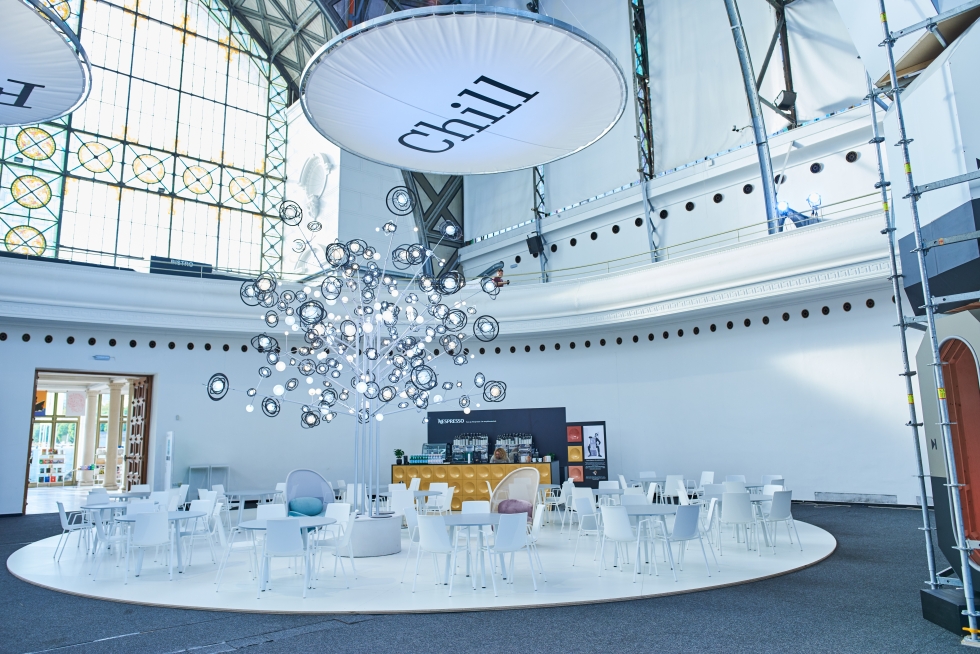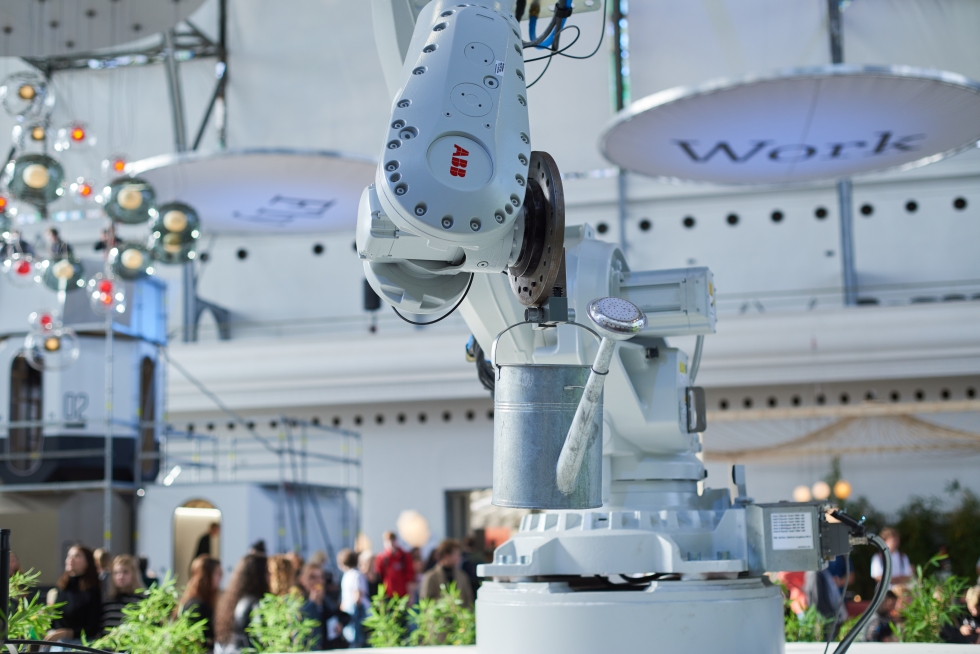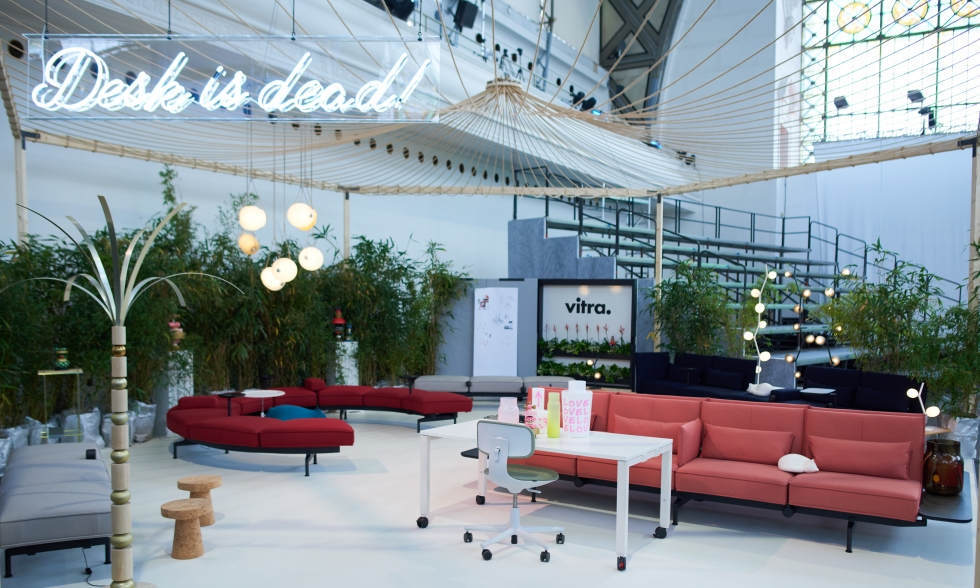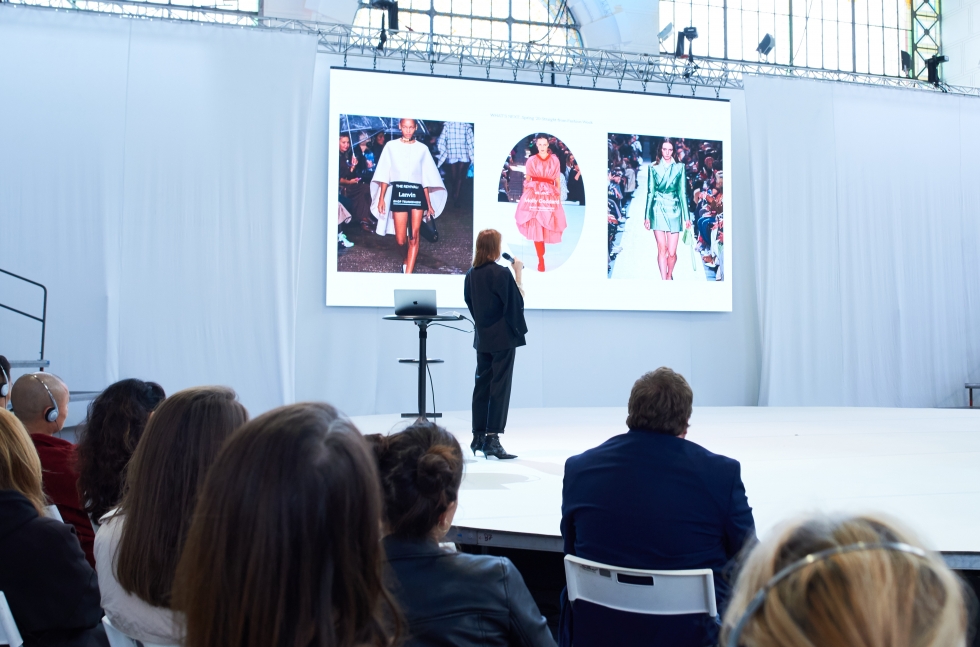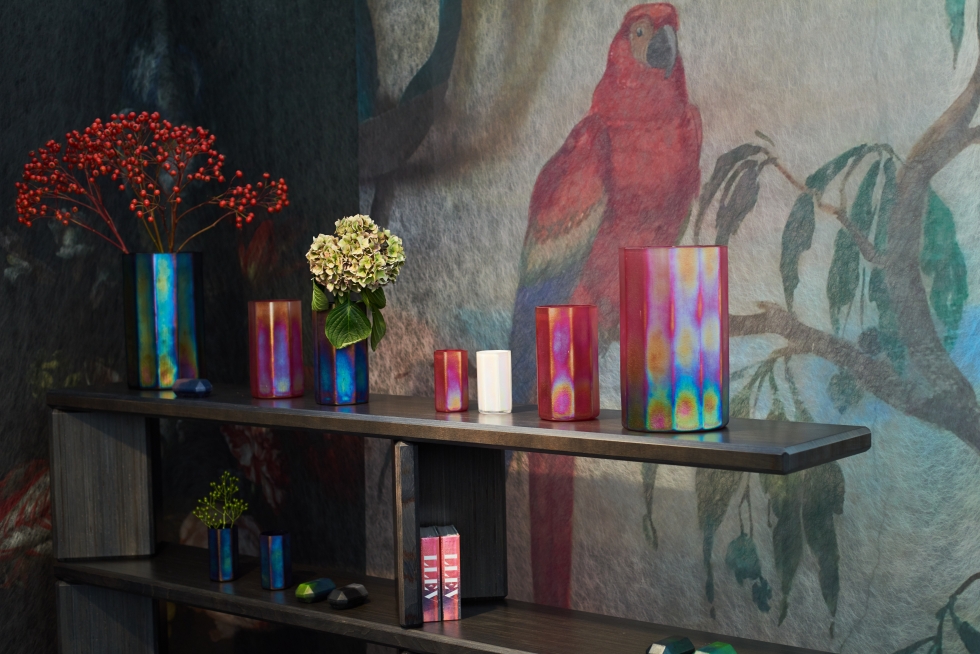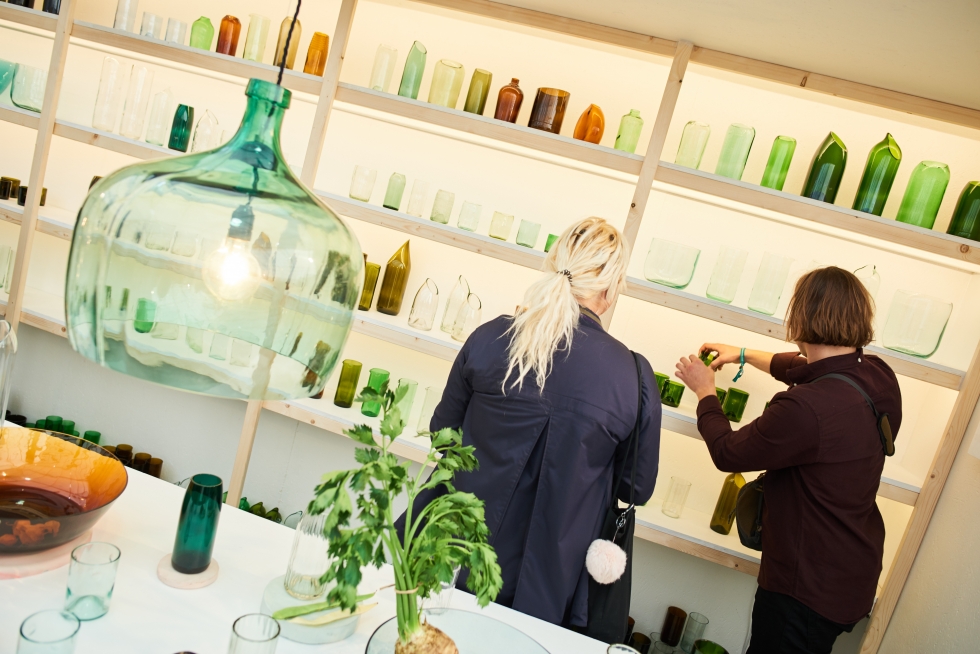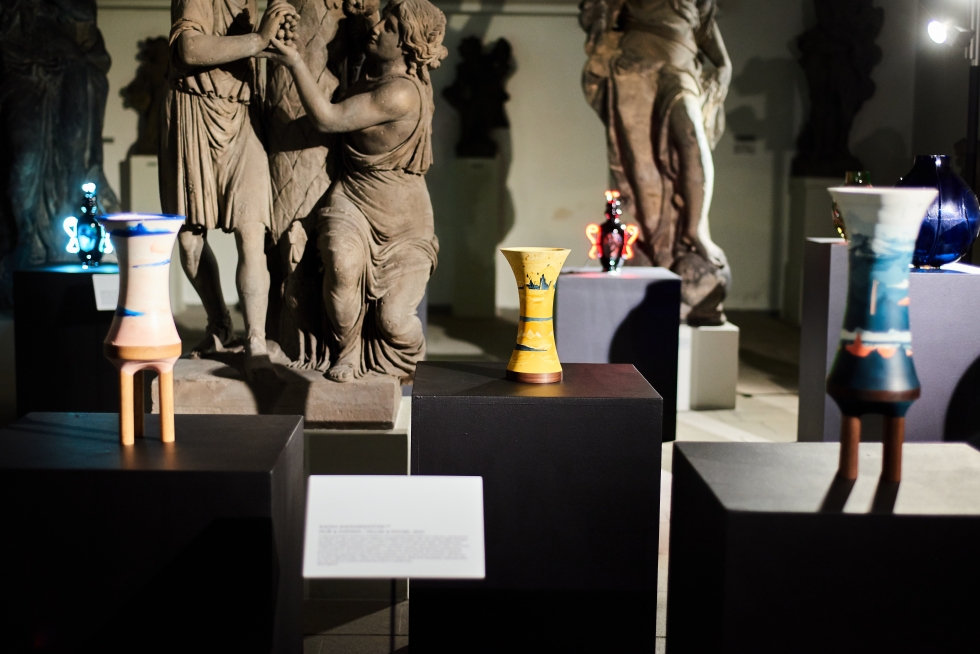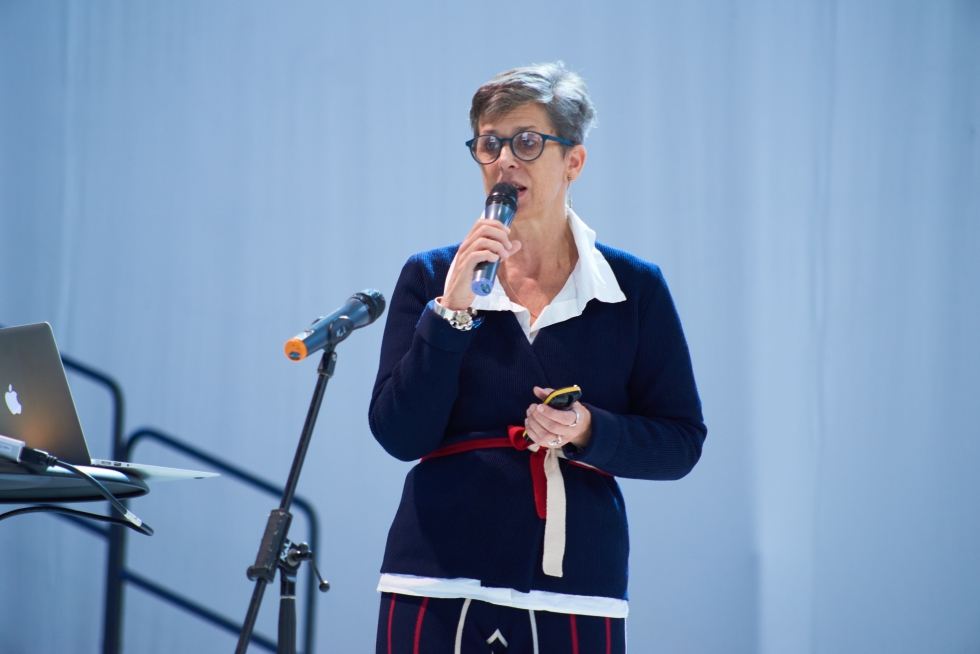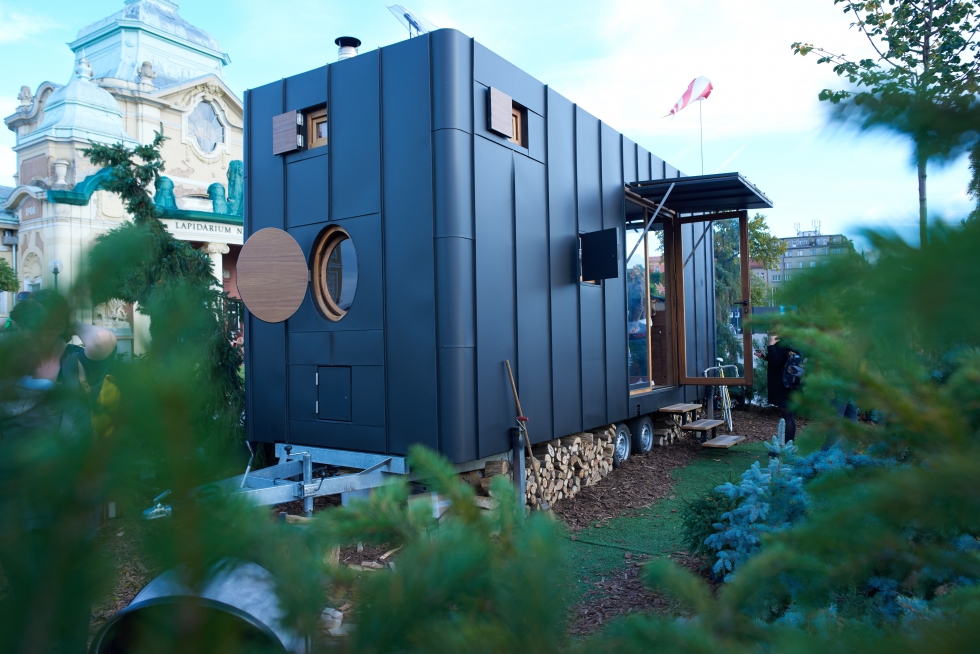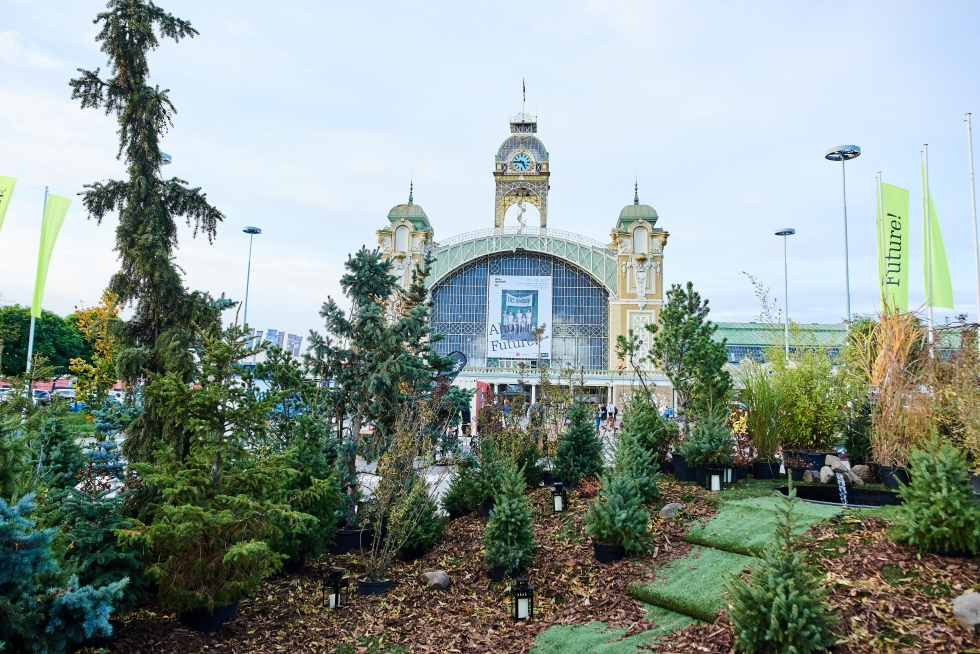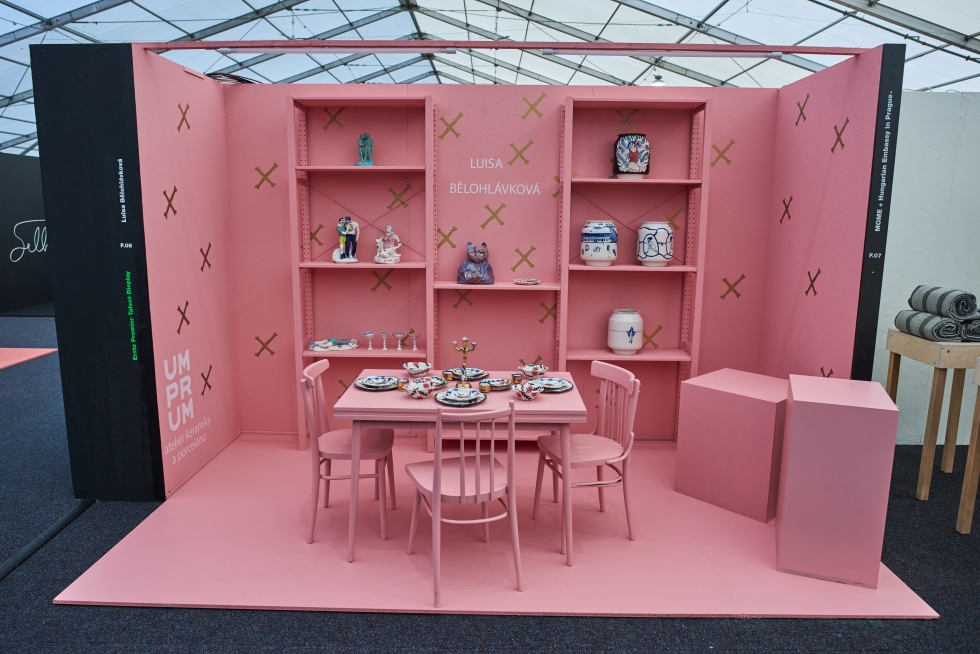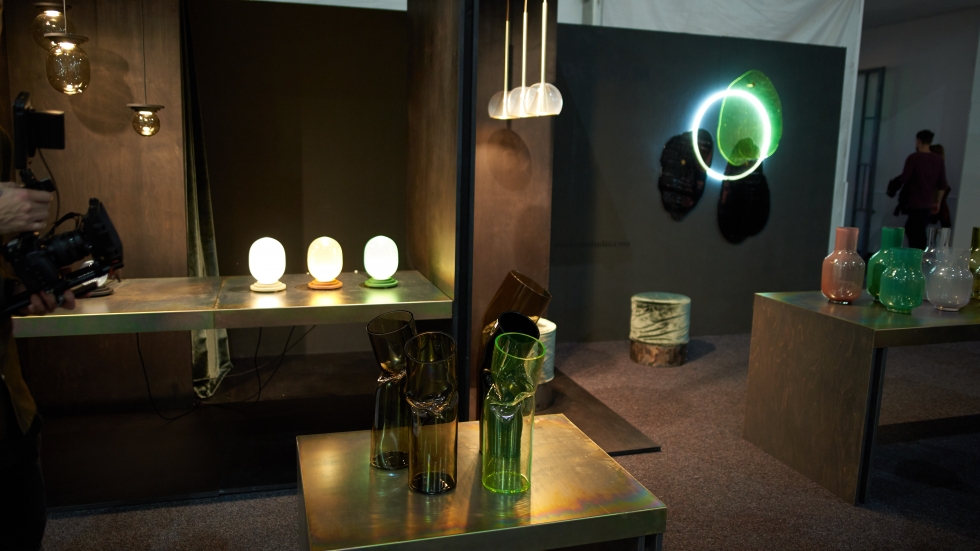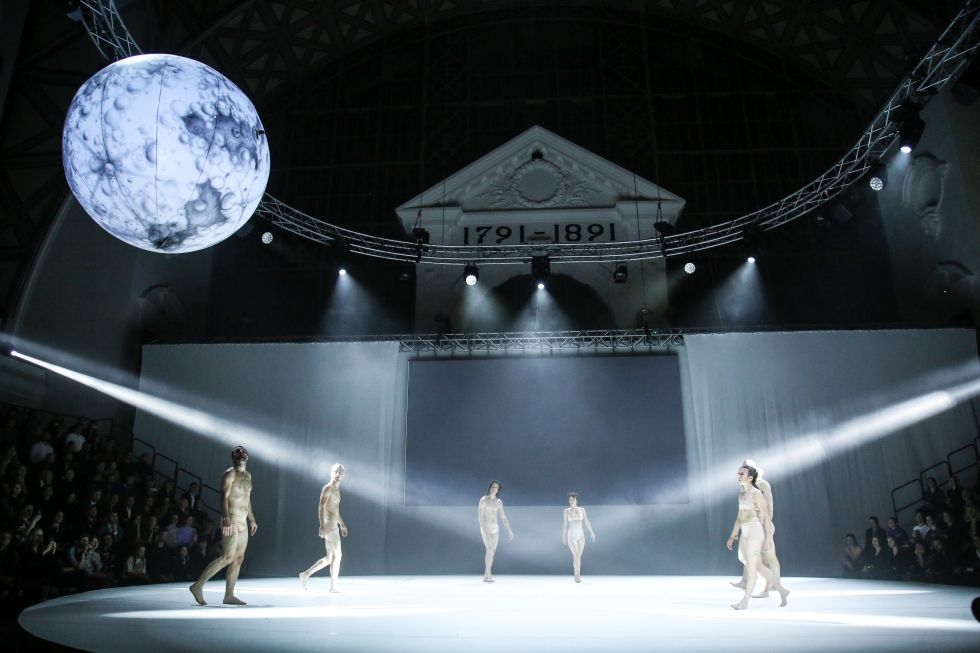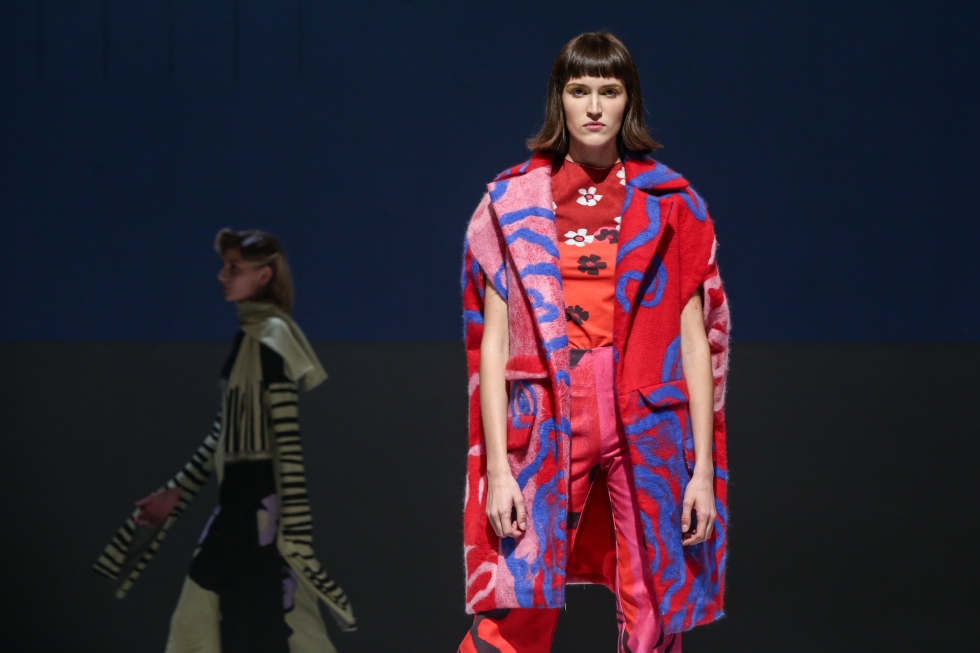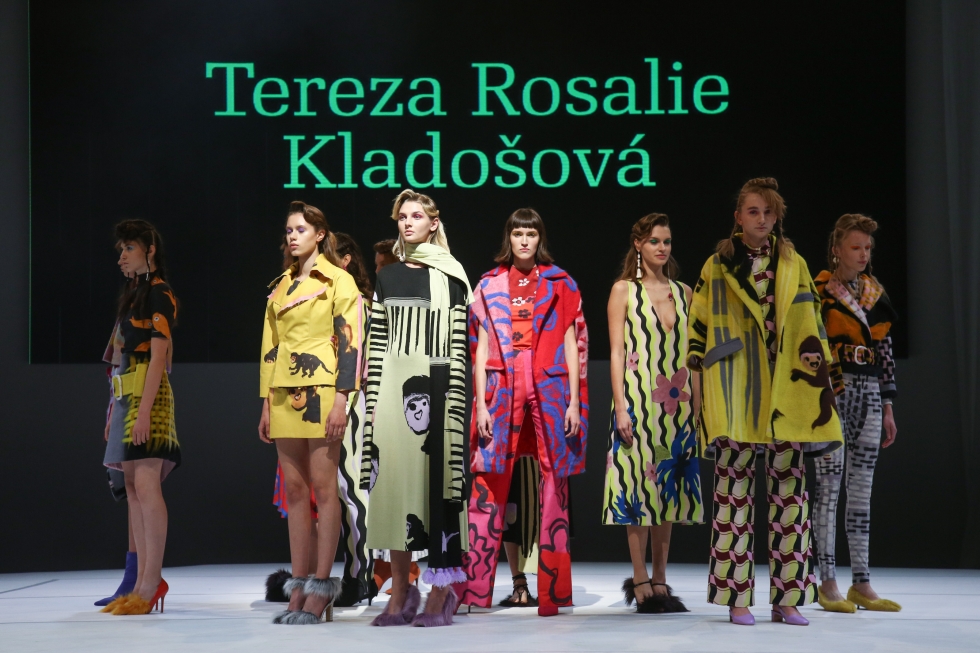The 21st 2019 Designblok developed in the sign of the Future
1. 11. 2019
Designblok, the Prague International Design Festival, is the largest exclusive exhibition of design and fashion in Central Europe. This year, it presented the record-breaking number of 348 brands, designers, studios, artists and schools. The main motifs resonating among the participants were sustainable production and technologies as well as experimenting with materials.
The 21st Designblok ran from 17 to 21 October 2019 at the Prague-Holešovice Exhibition Grounds in the Industrial Palace and the adjacent places as well as in many private spaces throughout Prague. Within the five days of its duration, it welcomed tens of thousands of visitors, who could not only enjoy the extensive exhibition but also numerous fashion shows, discussions, lectures given by Czech and foreign guests, two international conferences attended by leading experts, trips to regions and a program aimed at children.
What the 2019 Designblok offered?
Designblok traditionally comes forward with a main theme, which is subsequently omnipresent throughout the event and appears in an array of the exhibitors’ installations. The year 2019 revolved around Future, which substituted the previous subjects Icons, Childhood, Freedom, Sport, Food and Celebration and interlinked the festival via individual installations, the main exhibitors and the accompanying program.
“We decided to explore the role of designers in inventing products in the today’s world clogged with things and the responsible way of manufacturers in their production. In the future, both the designers and producers will have to employ their talents and skills much more extensively. They will rather solve various issues and follow ecological aspects and social impact of their work instead of designing new products. In the framework of the 21st Designblok, we wanted to show what design can do for our better future,” Jana Zielinski, the Designblok director, said.
The author of the architecture of the main exhibition, Designérie, on the subject of Future was Lucie Koldová. For the fourth time in a row, it inhabited the Central Hall of the Industrial Palace. Visitors could enjoy, for example, a space module, a view into the future of work, robots, a maze and inventions of designers that help in the countries of the Third World. “I solved the Designerie space as an all-encompassing universe representing various fields of human life and work in their current state, and moreover striped off all boundaries and barriers. My concept was to visualize an imaginary message addressed to the future generations, which we would leave behind at this moment. It is both a high technological progress and a human responsibility to our offspring. I think that content future is impossible without appropriately utilized past,” Lucie Koldová explained.
The heart of Designérie was Garden Stage, which during the five days of the Designblok duration offered a rich accompanying program encompassing many evens including 21 fashion shows, a theater performance provided by the Burki&Com ensemble or the concert of the music group Mutants Seeking Their Point of Departure. Crucial parts of the accompanying program were two international conferences. The Future Conference addressed the subject “Future and How Design Can Contribute to the Higher Quality of Live” via several outstanding figures in the field. These were Rosana Orlandi, the leading gallery owner; Andrea Běhounková, the publicist and Editor-in-Chief of Vogue CS; the climatologist Pavel Zahradníček; Pavla Gomba, the UNICEF director, and Tulga Beyerle, the curator and director of the Hamburg Museum of Decorative Arts. The Vitra Conference: Desk is Dead focused on the future of human work and on how this Swiss brand approaches the development of office spaces. The main speakers were the Vitra CEO, Nora Fehlbaum, the British star in the field of design, Jay Osgerby, and the director of the Czech Republic Vitra representation, Jiří Zavadil. The moderator of the discussion was the curator Adam Štěch.
In the words of Jana Zielinski, “The issue of the future is turning increasingly fundamental. This is why we this time decided to extend our program of lectures and workshops with two international conferences – and we are proud to have attracted stellar speakers. We think that it is important to present design and its role in a wider context. We have always perceived Designblok as not only a festival of top world design, but also as a platform for discussion, linking up and solving topical issues.”
Stats
The 21st most extensive design and fashion festival in Central Europe again invited visitors to the vast spaces of the Exhibition Grounds in the Prague district of Holešovice, which hosted its individual sections – Superstudio, Openstudio and Art House. For the fourth time, the event moreover offered the Designérie interactive landscape of experiences, situated in the Central Hall of the Industrial Palace, visually held on this year’s Designblok subject, Future. In addition to the spaces of the Exhibition Grounds, which presented over 14,000 m2 of installations in the Industrial Palace, at the piazetta in front of the Palace and in the Lapidarium of the National Museum, Designblok included a wide array of galleries, pop-up shops and showrooms throughout Prague.
The Industrial Palace and the Lapidarium of the National Museum in Prague were in the five days of the Designblok duration attended by the total number of 39,275 visitors, including 27,060 adults, 8,840 students, seniors and persons with severe health disabilities, and 3,375 children up to 15 years of age. As far as the main exhibition spaces along with the installations throughout Prague are concerned, the total number of the 2019 visitors exceeded the number of 47,225.
Superstudio, situated in the right wing of the Industrial Palace, hosted 71 manufacturers, distributors, brands and media titles. Art House offered 19 art projects, while Openstudio introduced to the incredible 174 presentations by designers and designers’ and school studios. Interesting installations also arrived with this year’s Diploma Selection competition, participated by 15 product designers, whose group exhibition was on display in Openstudio, and 15 fashion designers, introducing their collections on the catwalk.
Designblok venues
The main location of the 2019 Designblok was the Exhibition Grounds in the Prague district of Holešovice, which not only offered exhibitions presented in the Industrial Palace but also unique installations in the building of the National Museum’s Lapidarium and on the outside piazzetta. Admission to the Lapidarium Art House and to the outside installations was free for all groups of visitors.
Superstudio was traditionally located in the right wing of the Art Nouveau building of the Industrial Palace. The architecture, designed by Jan Rosický, provided space to novelties in the field of furniture, ligting and home accessories design, presented by prestigious Czech and foreign brands and producers. The exhibition offered new furniture collections as well as new views of minimalist living, a separate houseboat, work robots, electric bicycles and some virtual reality, too. The traditional Czech producers included TON, Brokis, Master&Master, Jelínek, Ravak and many others. The new platform – Hospodářské noviny Stage –, was the space for most various discussions and lectures addressing the mutual link between design and business.
Openstudio, inhabiting the left wing of the Industrial Palace, traditionally housed installations by 174 designers and designers’ studios from many European countries, presenting prototypes and products developed without the support of commercial manufacturers. This Designblok section also provided space to Diploma Selection alias the show of the best designers’ diplomas from eight EU countries. It moreover gave space to Reflex Stage, a platform for addresses given by both local and foreign participants and discussion blocks, organized by the Reflex weekly and introducing interesting guests.
Designérie – the landscape of experiences, situated in the Central Hall of the Industrial Palace – opened this year for the fourth time already and repeatedly presented interactive installations specifically created for Designblok by Czech designers. The space, designed by Lucie Koldová, tried to embody the all-encompassing universe, divided to zones representing the individual aspects of human life, such as play, work and rest. In addition, the Central Hall represented a space of boundless joy, providing a cosmic module and a display of subjects planned to accompany it on its mission to the Moon, a rickshaw loaded with design icons, a race circuit, a jumping maze and a robot, which during Designblok replaced its monotonous coachwork for blowing bubbles and waving the event’s flag. The entire setting went along with a café, designed to recharge for more revelations throughout the abundant space.
The 2019 Art House opened for the sixth time in a row, offering 19 exhibition concepts by renowned Czech and foreign designers and artists interacting with the Lapidarium space. The curators of the given exhibition, following its subtitle Odyssey, were Danica Kovářová and the duo Zielinski–Macek. The architect became Miroslav Vavřina, supported by his Bittercraft&Com studio. Visitors entered a dimmed space, which underlined 19 carefully selected objects. The Czech authors involved were Jakub Berdych Karpelis, the Dechem studio teamed up with Karin Zadrick, Sebastian Kitzberger, Dominika Petrtýlová, Jan Kaláb and other authors. The feature augmenting the visitors’ experience was an artificially generated wind and a rather hypnotic video-loop of a stormy sea.
In addition, this year’s Designblok involved an array of galleries, showrooms and concept stores from throughout Prague, which premiered their products as well as events in their showrooms.
The 2019 Designblok visual
This year’s visual presented the children of the core team, which has been preparing Designblok for more than twenty years, along with objects from a symbolical rickshaw, prepared for its journey to the future by Tereza Rosalie Kladošová. “When we speak about future, we see the planet and the outer space, but we always think about our children. We are frightened by the forecasts as to the lack of water, pollution and the necessity of moving, but we simultaneously hope in them. We hope they will lead the world to a better future. And then we think – what will they remember from their childhood? What will be the most important moments? Which objects will they retain in their memory, which ones will they want to keep and which will be their stories seen in their eyes? Icons, commonplace objects, symbols as well as minute visual games,” Jiří Macek, the creative director of the festival, describes. The author of the photographs for the visuals was Salim Issa and the graphic designer was Martina Černá from the Imagery studio.
The 2019 Designblok honorary board consisted of the following personalities:
PhDr. Helena Koenigsmarková, director, Museum of Decorative Arts in Prague
Eng. David Řezníček, director, Konsepti
Eng. Petra Ondrušová, director, Erste Premier
PhDr. Libuše Šmuclerová, director, CZECH NEWS CENTER
International guests
The Prague festival in 2019 welcomed numerous foreign guests, headed by two main guests. The British designer Jay Osgerby from the Barber & Osgerby studio arrived to introduce the Czech premiere of his modular system, SoftWork, produced by the Vitra brand and situated in the Central Hall in the installation designed by Lucie Koldová. A no less significant guest was the Danish visionary, Johannes Torpe, who introduced a new furniture collection for the Moroso brand in the extensive installation in the front part of Superstudio. The two renowned designers also appeared in the framework of the block of lectures for the widest public.
Art House, situated in the Lapidarium of the National Museum in Prague, continued exploring the topical possibilities of design in the sense of art form and their overlaps with the contemporary art scene. The selection of the curator and publicist, Danica Kovářová, and the Designblok curators, Jana Zielinski and Jiří Macek, offered the displays by several generations of artists as well as creative points of departure and methods from both the Czech Republic and Europe. Dutch designers traditionally occupied an exceptionally extensive part of the exhibition this year: Pieke Bergmans introduced an installation of neon discharges, the Formafantasma studio displayed its light object, WireRing, and the Kranen/Gille studio in its installation, Party, arrived with an object composed of shining heads. Other artists from abroad were Ragna Ragnarsdóttir from Iceland, Edina Andrási from Hungary, Jerguš Gálik and Malwina Konopacka.
“Jay Osgerby undoubtedly ranks among the global elite of design. We are very happy to see him having accepted the Vitra invitation and to visit the Prague’s Designblok for the second time already. And he will again present an utmost original project – this year, he decided to solve how we are going to work in the future, calling a work desk, as we’ve known it so far, to an end,” the Designblok director, Jana Zielinski, said.
The 2019 Diploma Selection
Designblok in cooperation with the EUNIC Cluster Czech Republic introduced the already sixth international competition of diplomas, Diploma Selection, which encompassed the works by the most talented European diplomates. This year, the curators were selecting the finalists from 154 students from 46 prestigious European universities. The finalists came from eight European countries – Hungary, Germany, France, Portugal, Italy, the Netherlands, Poland and the Czech Republic. The diplomas presented to the foreign jury pursued a wide array of issues, from a grown material of seaweed and furniture of pressed hemp fiber to exploring the emotional value of objects, memories cast into ceramic objects, ponderings on improving education and innovative toys. The finalists across both the product and fashion sections responded to the topical issue of sustainability, seeking ways out of the omnipresent overproduction and waste of sources. The jury also selected eight works by young designers from the Czech Republic to the competition.
The winners of the two sections came out from an international jury’s selection, com posed of prominent curators, gallery owners and journalists. For the first time in the competition’s history, both categories – Fashion Design and Product Design – saw the students from the Prague Academy of Arts, Architecture and Design excelling. The best project in the Product Design category selected by the jury out of the 15 presented works became the diploma Meter by Matěj Coufal, also from the Academy of Arts, Architecture and Design in Prague, while the winner in the Fashion Design category was Barbora Procházková with her collection Sapience. The awarded authors received €1000 to create a new collection and now have the possibility to present it at the next year’s Designblok – equally as the winners of the previous years had the chance to present themselves in 2019, and thus to show the progress in their work to not only visitors but also the jury.
The 2019 Diploma Selection jury:
Product Design: Juliet Kinchin, design curator, MoMA, New York (US), Lina Kanafani, curator, gallery owner, MINT shop, London (GB), Rossana Orlandi, gallery owner, Spazio Rossana Orlandi, Milan (IT), Tulga Beyerle, director, Museum für Kunst und Gewerbe Hamburg (D), Agnieszka Jacobson, art director, School of Form, Poznań (PL), François Leblanc, gallery owner, Gallery S. Bensimon, Paris (F), Gilles Massé, Wallpaper Store, Milan (IT), Adam Štěch, curator and design theoretician, Okolo (CZ), Nora Fehlbaum, CEO, Vitra (CH), Giulio Cappellini, art director, Cappellini (IT), Gerti Draxler, design specialist, Dorotheum (A), Stephan Hamel, design consultant (IT)
Fashion Design: Noémie Schwaller, fashion editor (UK), Andrea Běhounková, Editor-in-Chief, Vogue CS (CZ), Danica Kovářová, curator (CZ), Veronika Ruppert, journalist, editor, Modeschau, Radio Wave (CZ), Jan Králíček, creative director, Vogue CS (CZ), Petr Matějček, fashion editor (CZ), Gabriela Marešová, Editor-in-Chief, Proč ne?! (CZ)
Accompanying program
The 21st Designblok moreover revolved around an immensely rich accompanying program. It occured in several places at once, especially in the subject-oriented Designérie at Garden Stage, which represented the very heart of Designblok. It witnessed 21 fashion shows presented by Czech and foreign designers, the international conferences Future and Vitra: Desk Is Dead as this year’s news in the accompanying program, a concert and the ceremonies related to the Designblok Awards and the Diploma Selection Awards. The generous space of the Central Hall, the variability of the stage, the café, the Maze for children to jump in and the miscellaneous program made Garden Stage an extraordinarily visited place for adults and children alike.
Yet another animated center of events was the discussion platforms Reflex Stage in Openstudio and Hospodářské noviny Stage in Superstudio, while the latter also premiered during the 21st Designblok. During the lectures, visitors had the possibility to encounter the Designblok foreign guests as well as many Czech designers, who introduced their work during their lectures. All the above-mentioned platforms – the central Garden Stage, the discussion Reflex Stage and Hospodářské noviny Stage – offered an extensive and rich program on a daily basis.
The 2019 Designblok awards
The Designblok best projects and installations traditionally received accolades from a jury of curators and representatives of Czech media active in the related field. The awards’ winners were acknowledged during the closing ceremony at Garden Stage in the Central Hall of the Industrial Palace. The jury judged the best installations by producers, distributors, school studios, designers and designer’s studios and eventually awarded 12 best authors. All the nominees and winners received a diploma and a special badge, which helped visitors map out the most successful presentations of the Prague week of design. The absolute winner of 2019 became Lucie Koldová, who presented herself in several installations of products bearing her original morphology. These were the news by the Javorina brand, which simultaneously earned the award for the Best Furniture Collection, the XX collection of tables and the Master & Master brand and its chair, Cocon, while the Central Hall displayed the lights Big One and Ivy, created for the Brokis brand.
“Lucie Koldová became the absolute winner of this year’s Designblok. Not just via her installations in Designérie but also via the novelties, which she introduced in cooperation with the renowned manufacturers, Brokis, Javorina, Master & Master and mmcité. She clearly showed that her designs – pure, clean, effective and flawlessly executed – are a sure bet for the producers. Koldová can undoubtedly be viewed as as an internationally renowned designer who helps spread the good name of Czech design,” the Designblok director, Jana Zielinski, said.
The 2019 Designblok winners
1. Best Furniture Collection
NOMINEES: Master & Master / Lucie Koldová, Cocon chair; Situs / Free seating set
WINNER: Javorina / Vrtiška & Žák, Lopa and Tuba chairs; Lucie Koldová, XX collection of tables
2. Best Home Accessories Collection
NOMINEES: Luisa Bělohlávková / Dining set collection; Zuzana Svatik / She Said Yes vases collection
WINNER: Tititi / wooden objects
3. Best Lighting Collection
NOMINEES: Brokis / Big One collection; Nahaku / Petting light
WINNER: Dechem / Stratos and Kono lights
4. Best Jewellery Collection
NOMINEES: Janja Prokić / Sadalsuud collection; Skleník v pokoji / Sklenobýl collection
WINNER: Želé / Autenticita collection
5. Best Designer’s Novelty
NOMINEES: Bro. / New Urban Picnic dishware; LLEV / Book furniture collection, Nueevo vases
WINNER: Jiří Krejčiřík / Eclecticism furniture collection
6. Best Producer’s Novelty
NOMINEES: Mmcité / Lucie Koldová, Manta chair; Javorina / Vrtiška & Žák, Lopa and Tuba chairs; Lucie Koldová, XX tables collection
WINNER: M&T Manufacture / Magnetic handles
7. Best Producer’s/Seller’s Installation
NOMINEES: Javorina; Renault
WINNER: TON
8. Best Designer’s/Designer’s Studio Installation
NOMINEES: Tereza Rosalie Kladošová; Papelote
WINNER: Herrmann & Coufal
9. Best School Presentation
NOMINEES: K.O.V. Studio, Academy of Arts, Architecture and Design in Prague / selected works by students and pedagogues; Ladislav Sutnar Faculty of Design and Arts, Studio of Ceramics / Tak to bylo… project
WINNER: Academy of Arts, Architecture and Design in Prague / Studiolo Robotico R.U.R. project
10. Excellent Feat outside Categories
NOMINEES: Le Mans Redux / Aero Minor automobile; Roman Šedina & friends / Life of Vase
WINNER: Hideandseek / mobile units
11. Best Exhibited Fashion Collection
NOMINEES: BRAASI / Parachute collection; Julie / Ikony collection
WINNER: Tereza Rosalie Kladošová / new models from Merino Recycle collection
12. Main Designblok Award
WINNER: Lucie Koldová / Cocon chair for Master & Master, Manta chair for mmcité, Big One lights for Brokis and the architecture of the main 2019 Designblok exhibition – Designérie
The 2019 charity project
In addition to all the related activities, Designblok annually promotes a specific non-profit or charity project. This year, it was the organization Elixir to Schools, which supports the education of pedagogues and focuses on the creative education of the subjects of physics and digital technologies. At the closing ceremony, the representatives of the organization received a check in worth CZK 100,000, which the event allocated from the admission fees.
As in the previous years, the 2019 Designblok published many press materials informing about the event’s program and the individual places of the festival. They included the program catalogue featuring the profiles of the individual participants, the Designblok brochure introducing visitors to the most interesting places and installations, the brochure specifically devoted to Art House, and the brochure devoted to the Diploma Selection competition, i.e. a summary of the finalists and their projects. This year, visitors could moreover participate in the Decathlon, which drew their attention to the most interesting and interactive Designblok installations, and could for the first time ever download the 2019 Designblok app – a mobile summary of the exhibiting artists and the accompanying program.
